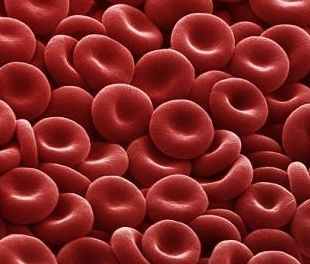

MedFriendly®


Red Cell Distribition Width (RDW)
Red blood cells of different
widths under the microscope.
Red cell distribution width (abbreviated as RDW) is a
measurement of the amount that red blood cells vary in
size. Red blood cells help carry oxygen in the blood.
HOW IS THE RED CELL DISTRIBUTION WIDTH
CALCULATED?
Electronic instruments are capable of analyzing the blood
sample and detecting the pulses that are produced by red
blood cells. The stronger the pulses are, the greater the
red blood cells are in size. Likewise, the weaker the
pulses are, the smaller the red blood cells are in size.

WHAT IS THE NORMAL LEVEL OF THE RED CELL DISTRIBUTION WIDTH?
The normal RDW level is 10.2 to 14.5%. It is important to keep in mind that the ranges
mentioned above will be different depending on the machine used to do the blood test.
Always use the normal range printed on the lab report to decide what range is normal.
The RDW and MCV levels can both be increased if there is too little vitamin B12 or folic acid (a type of
vitamin) in the body. A vitamin is one of a group of substances made up partly of carbon (an element)
that are essential in small amounts for normal bodily functioning and chemical processes in the body to
take place.
Another scenario is that the RDW level can be high, but the MCV level can be low. This can happen
because of iron deficiency anemia. Iron deficiency anemia is a decrease in hemoglobin in the blood
that is caused by an inadequate supply of iron. Hemoglobin is a substance present in red blood cells
that help carry oxygen to cells in the body. Iron is needed to make hemoglobin, which is why a
decreased amount of iron leads to a decreased amount of hemoglobin.
Another cause of a high RDW level and a low MCV level is thalessemia intermedia. Thalessemia
intermedia is another type of blood disorder in which there is impaired production of one or more of the
elements that make up hemoglobin. If the red blood cells are fragmented (broken) into smaller parts, this
can cause the RDW to be high and the MCV to be low. In this situation, the red blood cells vary in size
when they are broke up (which is why the RDW level is high) but the cells do not take up much space
(which is why the MCV level is low).
A final possibility is that the RDW level is increased and the MCV level is normal. This can be caused
by the beginning stages of a decrease in vitamin B12 or folic acid (a type of vitamin) in the body. It can
also be caused by the beginning stages of iron deficiency anemia, which was described two
paragraphs ago.
WHAT CAN CAUSE RED CELL DISTRIBUTION WIDTH TO BE TOO LOW?
A low RDW (below 10.2%) means that the red blood cells vary very little in size. One reason for a low
RDW level is macrocytic anemia. Macrocytic anemia is a blood disorder in which not enough red blood
cells are produced, but the ones that are present are large. Another cause of a low RDW level is
microcytic anemia. Microcytic anemia is a condition in which abnormally small red blood cells are
present. In these two disorders the red blood cells do not vary much in size because they are either all
small or all large. This is what causes the RDW level to be low.

WHAT CAN CAUSE THE RED CELL
DISTRIBUTION WIDTH TO BE TOO HIGH?
A high RDW (over 14.5%) means that the red
blood cells vary a lot in size. There are many
possible reasons why the RDW level can be
too high. To determine what the possible cause
of a high RDW level is, a comparison is made
to the mean corpuscular volume (abbreviated
MCV). The MCV is the average amount of
space occupied by each red blood cell.
If both the RDW and MCV levels are increased, there are several possible causes. One possible cause is liver disease. The liver is the largest organ in the body and is responsible for filtering (removing) harmful chemical substances, producing important chemicals for the body, and other important functions. Another cause of high RDW & MCV levels is hemolytic anemia. Hemolytic anemia is a condition in which the red blood cells are destroyed earlier than they should be.














